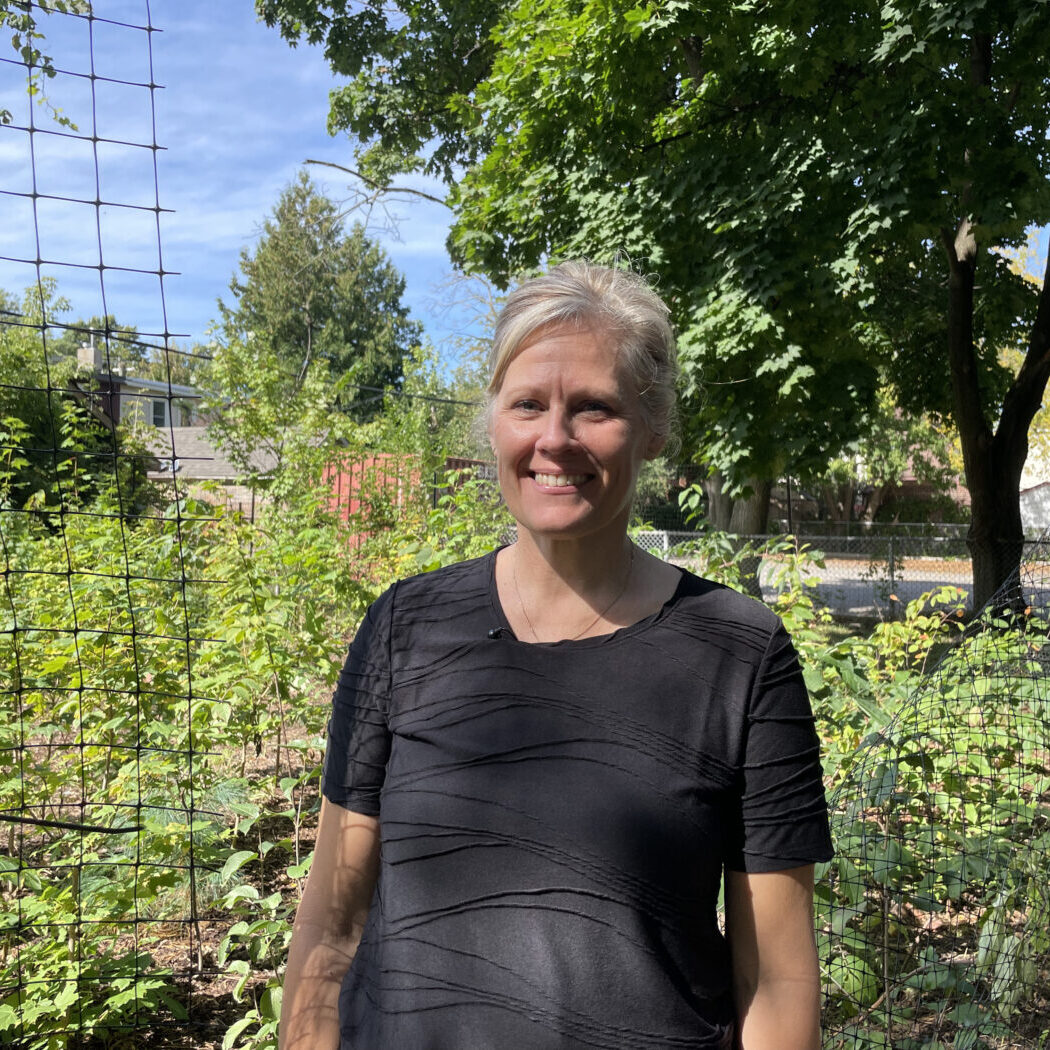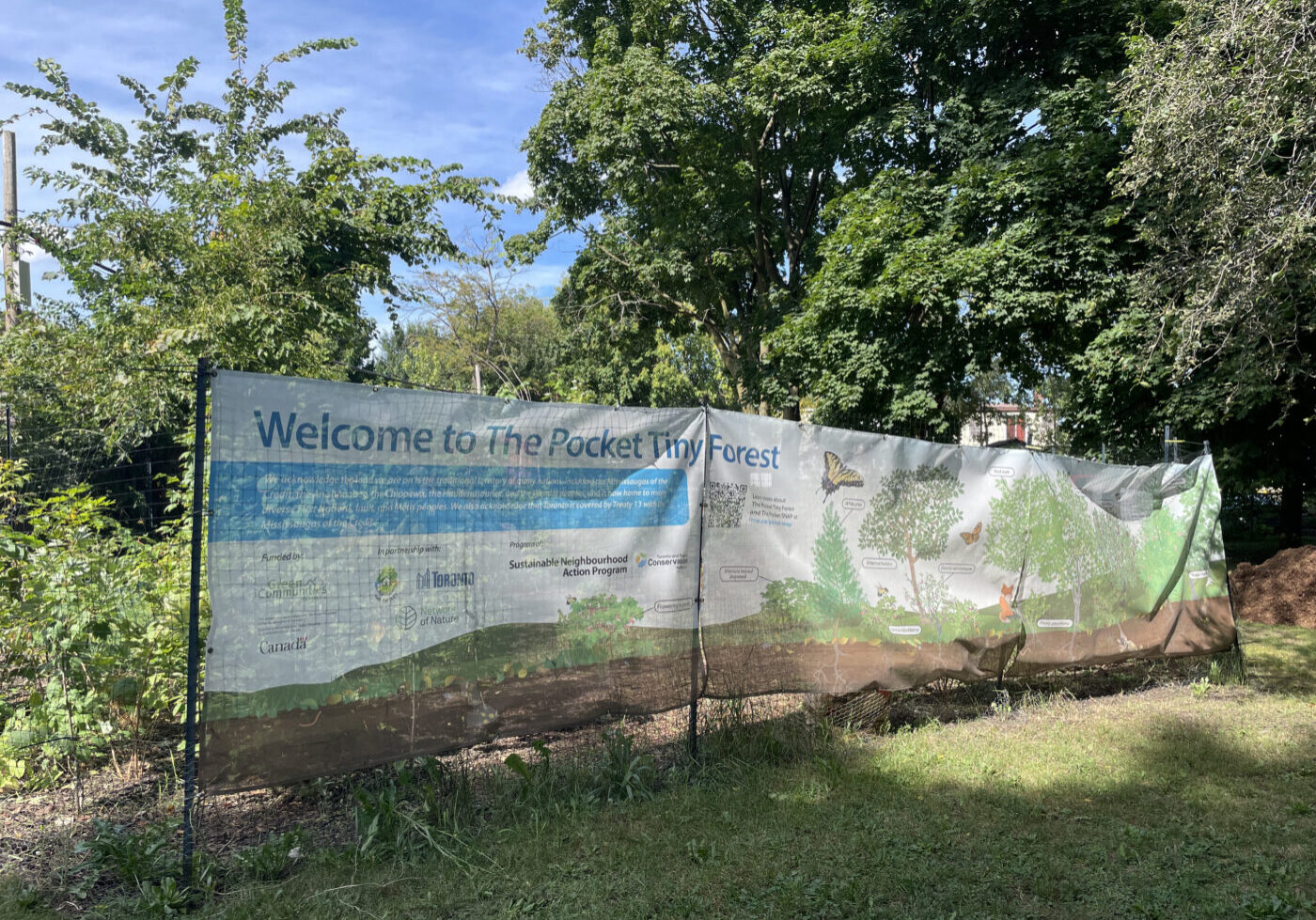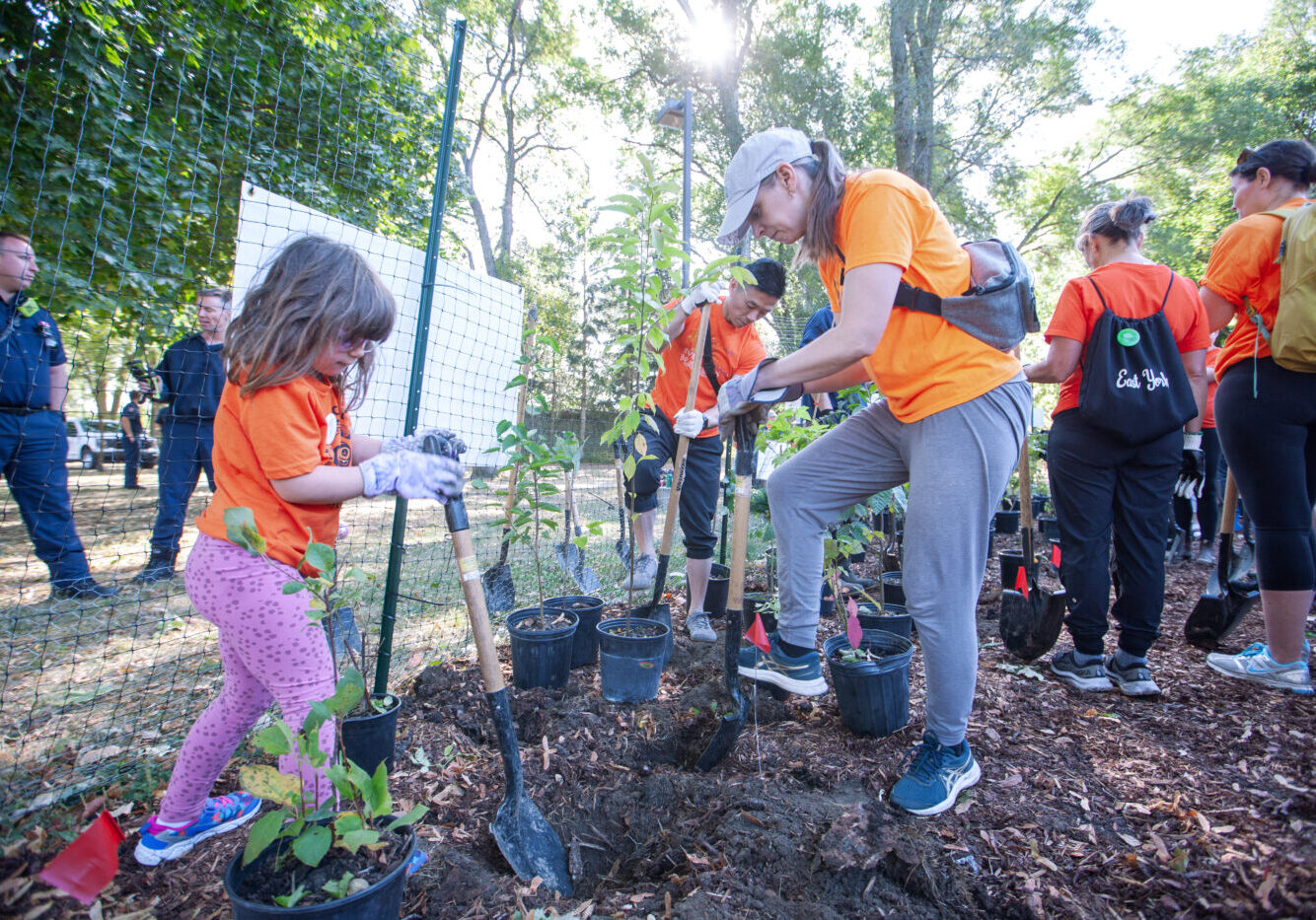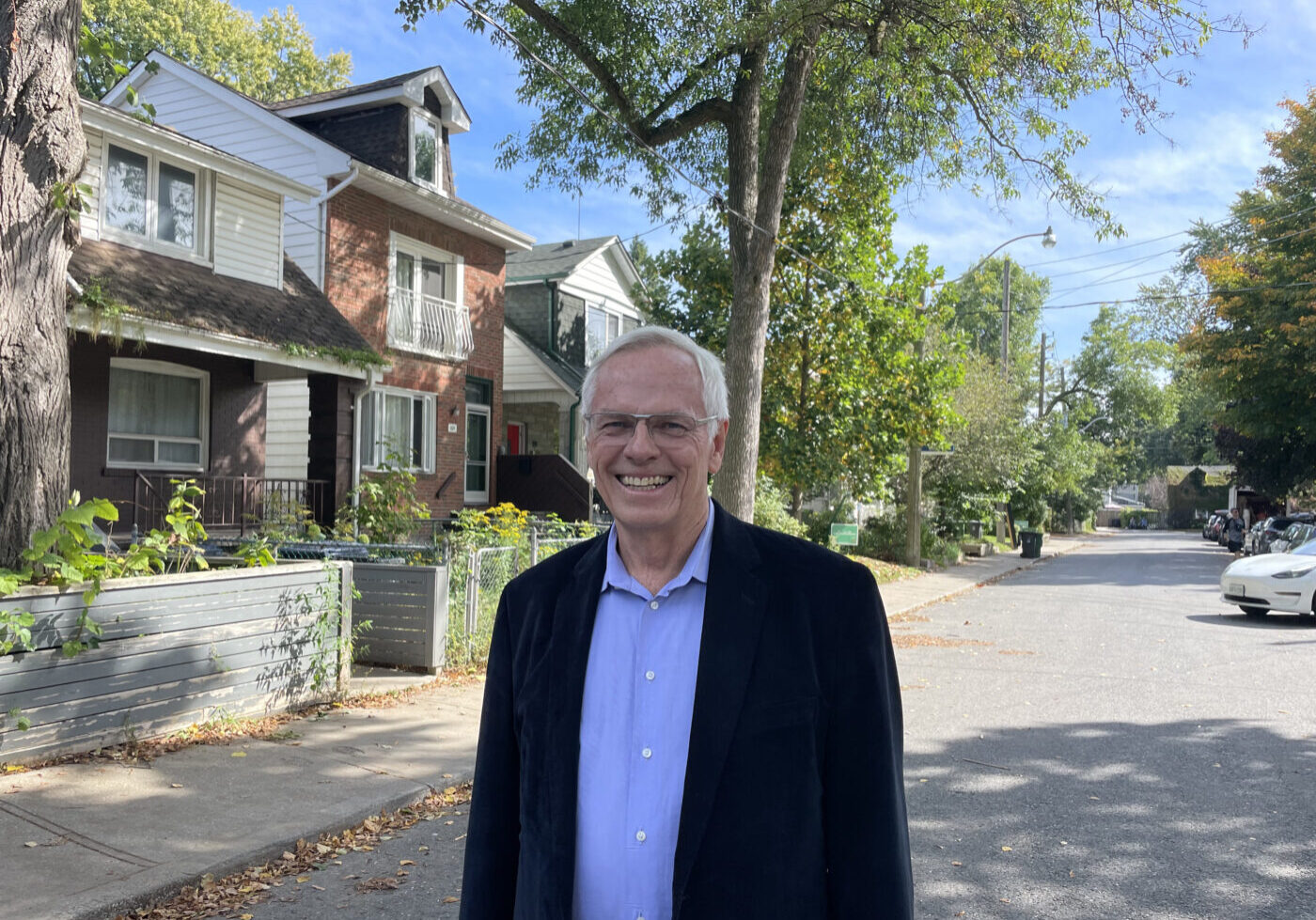THE GREEN LINE
ORIGINAL STORY
TORONTO'S FIRST 'TINY FOREST' PLANTS SUSTAINABLE NEIGHBOURHOOD IN THE POCKET
The Green Line team spoke with the Toronto and Region Conservation Authority to learn how it's helping residents build a Sustainable Neighbourhood Action Plan.

Patricia Lewis, program manager of Sustainable Neighbourhoods for the Toronto and Region Conservation Authority (TRCA), stands by the “tiny forest” at Oakvale and Phin Avenues.


Amanda Seraphina James Rajakumar
Indian immigrant with a post-grad in journalism from Centennial College. Now living in Grange Park, meeting new people, and hearing different stories. Has four names, so it’s a pick-your-player situation.
November 1, 2024
With warmer winters and hotter summers, Torontonians are feeling the effects of climate change. So, one neighbourhood is working to build a more sustainable future at the hyperlocal level.
In The Pocket, there are houses from the early 1900s that are less energy-efficient, there’s lower green space per capita compared to the rest of Toronto and there’s a higher ground-surface temperature in some areas.
That’s why the Toronto and Region Conservation Authority (TRCA) joined residents to work on a Sustainable Neighbourhood Action Plan, or SNAP for short.
“The community was really supportive right from the get-go. I think as we started sitting down and talking to the Pocket Community Association, which is the residents’ group here, as well as some of the stakeholders in the neighbourhood, I think once they saw that our objectives really aligned well with the work that they were doing. I think they were fully on board,” says Patricia Lewis, program manager of Sustainable Neighbourhoods for the TRCA.
“Everyone we spoke to realized that our intent is to come in to support the work that's already happening and we can bring resources to that,” Lewis adds, citing staff time, grant funding and establishing new partnerships as examples.
SNAP started in 2012 across Ontario to create sustainable neighbourhoods in older urban areas.
Lewis explains that TRCA conducts a standard technical screening process to select the next neighbourhood that needs assistance. It collects and analyzes data from municipalities about energy and water usage, urban tree canopy cover, flood risk and more. The results of the analysis pinpoint neighbourhoods where there are overlapping concerns, which is how the TRCA picks the areas it chooses to focus on.
In the Pocket, SNAP launched in 2021 with four goals:
- Revitalize green spaces
- Undertake home retrofits to reduce greenhouse gas emissions
- Add streetscape improvements to increase tree canopy cover and decrease traffic congestion and
- Help community members take more sustainable actions.

The “tiny forest” in The Pocket is located at Oakvale and Phin Avenues.

“There was a lot of excitement. People were invited to speak about what they liked about The Pocket, what they wanted to improve about The Pocket, what they wanted to see more of," Lori Zucchiatti O’Neill, the Phin Park and Greening Committee chair, says.
"One of the dominant themes was nature….People were thrilled that so many people in the neighbourhood were concerned about climate change, reducing our carbon footprint, increasing biodiversity, things of that nature.”
O’Neill adds that the TRCA held two community consultations where local residents were invited to participate. Since the meetings were online, over 100 people joined. TRCA staff guided these discussions with questions that enabled residents to share their input.

Residents of The Pocket and TRCA staff members plant Toronto’s first “tiny forest” on Sept. 30, 2023.

Last year, the Pocket SNAP planted Toronto's first “tiny forest,” an urban area that's tightly packed with vegetation to help restore the hyperlocal ecosystem. Located right by Oakvale and Phin Avenues, it includes native plants to increase biodiversity, improve air quality and reduce heat.

David Langille, a resident of The Pocket, stands at the intersection of Condor and Baird Avenues.

“I appreciate having a green community. Anything that will help to reduce our carbon footprint and help save the world from climate change, I'm on," says David Langille, a resident of The Pocket.
The Pocket’s “tiny forest” is set to grow over the next 20 to 30 years, but TRCA staff are only there to equip the neighbourhood with the necessary tools to maintain the forest. It’ll be up to community members to continue the work in the long run.
Fact-Check Yourself
Sources and
further reading
Don't take our word for it —
check our sources for yourself.
Here's your chance to support the only independent, hyperlocal news outlet dedicated to serving gen Zs, millennials and other underserved communities in Toronto. Donate now to support The Green Line.